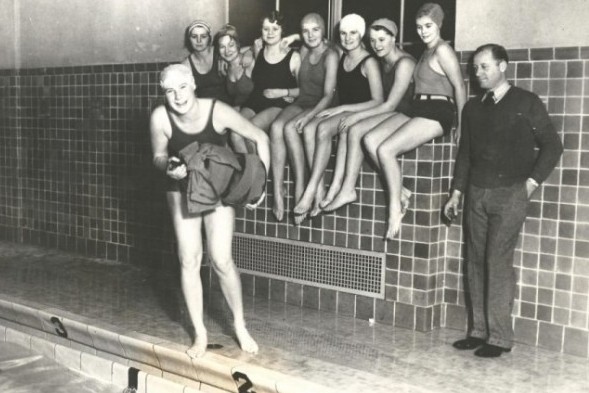
By David Eskenazi and Steve Rudman
Friends used to insist that, while swimming existed long before Ray Daughters came along, he was the one who perfected it. His cronies obviously jested, but an un-bylined Associated Press article, published three years after Daughters tutored Queen Helene Madison to three gold medals at the 1932 Los Angeles Olympic Games, contained this tribute to the acclaimed coach: Daughters is so good at what he does that he could probably teach fish something about swimming.
Leaving fish to their own devices, Daughters taught an estimated 40,000-50,000 Washingtonians how not to sink in a career that spanned 1916-64.
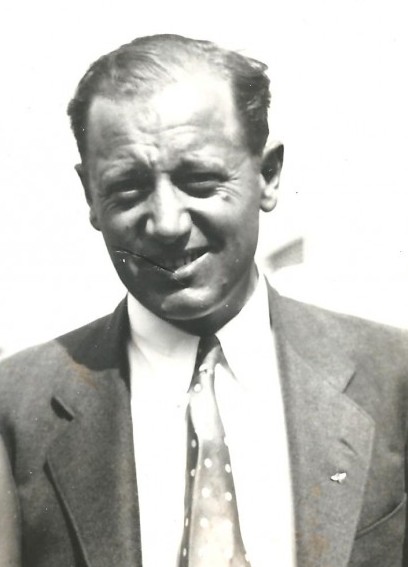
Daughters worked first at the long-gone Crystal Pool on Second Avenue and Lenora, and later at the Washington Athletic Club. After inhaling chlorine for 35 years, the tally showed that in addition to instructing walk-in paddlers off the street, Daughters coached men and women who set 31 world records, 301 American records, won 74 national championships and claimed eight Olympic medals, four of them gold.
Had Daughters been a football or basketball coach instead of a swimming guru, he would today be held in the same high esteem as Northwest legends such as Gil Dobie, Don James, Hec Edmundson and Marv Harshman, to cite four, and several others after whom statutes have been erected and buildings named.
But Daughters has yet to be cited by Washington State Sports Hall of Famer voters, even through he coached, managed or advised United States swimming teams at every Olympics from 1932 to 1964 and joined the International Swimming Hall of Fame when Richard Nixon occupied the White House (1971).
I had to be born to do something, Daughters told The Seattle Times in 1964 as he went into retirement on Camano Island, and coaching swimming is what I was born to do.
The son of letter carrier William Daughters, Raymond Earl Daughters arrived in Seattle with his family from Denver, CO., in 1905, when he was 10 years old. He learned how to swim he specialized in the freestyle and butterfly at the old Washington Natatorium and attended Queen Anne High School, where, by his own admission, he had no head for books.
I wasnt much of a student, but I managed to graduate, quite an accomplishment for me, Daughters said at a retirement party held in his honor in 1964. I found teaching swimming more profitable than learning algebra. It was the biggest mistake of my life. Everything Ive learned since, Ive had to learn the hard way. I had no swimming coach to hit me over the head and steer me through school.
Daughters developed into quite a swimmer, winning many sprint and distance races in the Pacific Northwest in the early 1900s. When the Illinois Athletic Club’s record-breaking men’s team, coached by Hall of Famer Bill Bachrach, exhibited in Seattle in 1914, Daughters finished a close second to Arthur Raithel, then the national 500-yard freestyle champion.
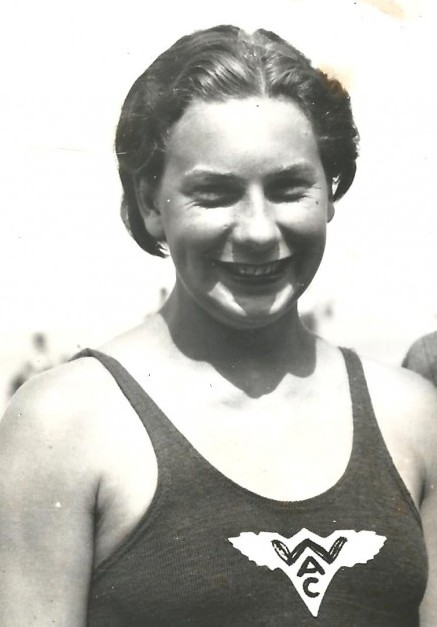
Daughters evolved into what the late Georg N. Myers of The Times described as a Svengali in a bow tie, a big man who was brusque and burdened by an unceremonious and indestructible sense of humor.
Daughters got his coaching start in 1916 when he signed on to largely perform grunt work at the just-opened Crystal Pool, one of the more remarkable athletic facilities in Seattles rich sporting past, and a trace of which can still be seen today.
In its heyday, the Italian Renaissance-style building, decorated with painted green dolphins and sporting a regal dome, was one of the most popular recreation spots in the city. Under an arched glass ceiling, swimmers splashed in a 260,000-gallon heated pool of saltwater piped in from Elliott Bay, surrounded by decorative tiles and seating for 1,500.
Built by timber baron C.D. Stimson, after whom the famous First Hill mansion is named, and designed by legendary architect B. Marcus Priteca, who also gave Seattle its Coliseum Theatre (also financed by Stimson) and much of Longacres (see Wayback Machine: Joe Gottstein’s Racing Revival), Crystal Pool was a pleasure palace rated in its day as one of the best natatoriums on the West Coast.
In addition to offering swimming to the public, Crystal Pool hosted boxing matches (see Wayback Machine: Nate Druxman, Mr. Boxing) and ice skating, among other recreations. In 1923, Cyrstal Pool was even the site of a famous rally by the Klu Klux Klan.
As an athletic/entertainment venue, Crystal Pool had a short life span, just 15 years. After its abrupt closure, Crystal Pool stood vacant for years. In 1943, it became home to Bethel Ministries, which did away with Pritecas domed entrance and turned the pool into pews.
Bethel Ministries occupied the site until 1999 when, needing cash, it sold the building to a real estate development company, which demolished all but part of the still-visible façade and erected a condo complex on the ground where Helene Madison, under Daughters keen eye, developed into a champion swimmer.
I picked up the towels, mopped the floor, taught a little swimming and, at night, I ran the laundry, Daughters said, explaining his genesis as one of the greatest coaches in Puget Sound history.
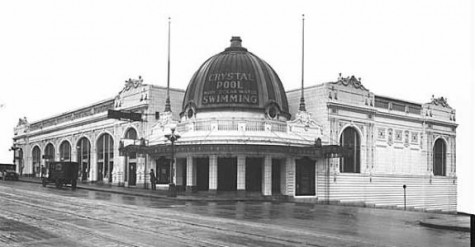
Ten years into Daughters run at Crystal Pool, he attended the Green Lake Swim Carnival, an annual event sponsored for much of the 1920s by The Seattle Post-Intelligencer. That was where Daughters first eyed Madison, a 14-year-old of no particular distinction to anyone but Daughters, who, envisioning an invisible David inside an un-carved Duccio block of marble, volunteered to coach her.
Daughters work with Madison has been extensively chronicled here (see Wayback Machine: Queen Helene Madison), most of it focused on Madisons Olympic glory in Los Angeles in 1932 and the run of miserable luck she experienced once the cheering stopped. But the run up to those Games, orchestrated by Daughters, was as interesting as the climax.
Long before he discovered Queen Helene, Daughters told The Seattle Post-Intelligencer, There will never be a national swimming champion from Seattle. Crystal Pool is only open for swimming six months a year (April-September), and a champion needs to train all year around.
That became possible in 1930 when the Washington Athletic Club opened at 1325 Sixth Avenue at Union in downtown Seattle. Darwin Meisnest, a coal company executive and the impetus behind the construction of Husky Stadium in 1920 when he served as Washingtons graduate manager (todays athletic director), signed on as WAC director (and major investor) and lured Daughters away from Crystal Pool to run the clubs swimming program (Daughters always referred to Meisnest as boss man).
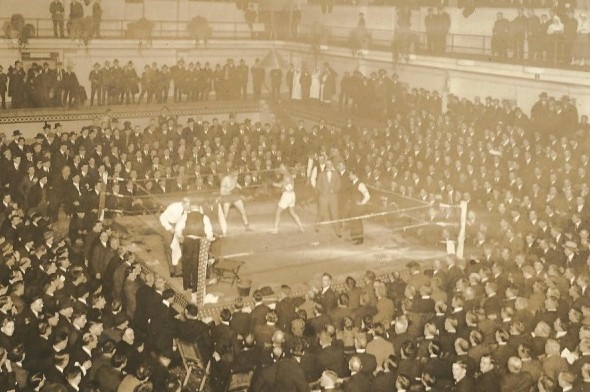
Due to the Great Depression and an early scandal involving the misuse of investment money (four early WAC financial supporters went to prison), the WAC almost never got off the ground. But when it did, largely due of Miesnests efforts, it established as its purpose to foster amateur athletics, promote physical culture, good fellowship, recreation and social entertainment.
The WAC included thousands of dues-paying members, but it significantly also had a club-within-a club, which became one of the most influential organizations in the city (in 1955 several of the insiders conceived the idea of Seattle hosting the Century 21 Exposition, which became the Seattle Worlds Fair in 1962).
Named The 101 Club, its roster featured many of Seattles wealthiest citizens, several of whom took a major financial interest in furthering the careers of would-be Olympic athletes, starting with Daughters first major project, Madison. They got a great ROI for her.
In November, 1931, for example, the AAU recognized 26 national records established by Madison. Now she holds 51 out of 62 recognized American freestyle marks, wrote The Times. She also holds 12 out of 16 recognized world records in the freestyle.
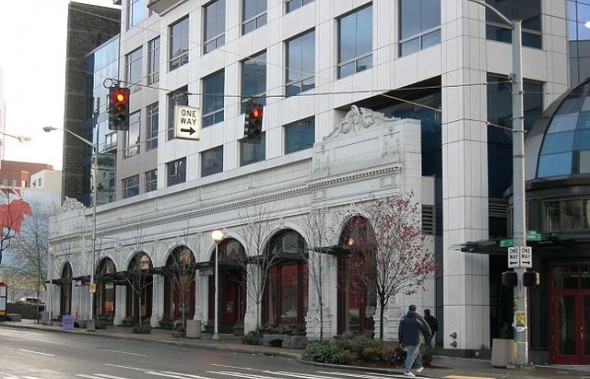
Madisons subsequent feats in Los Angeles (three gold medals) made Daughters a national coaching celebrity. Some of his coaching rivals called him lucky, one even insisting in a 1932 Associated Press story that Madison “would have become a champion without Daughters.” While Daughters wouldnt comment on that, he did say, Im certain Ill never have another one remotely like her.
But then Daughters came up with Olive McKean, a former WAC teammate of Madisons, and promptly demonstrated he had not been lucky with Madison at all. By 1934, two years after Madison exited, Daughters had developed McKean into U.S. Swimmings Newcomer of the Year.
Add the name of Olive McKean, Seattle, to the list of Americas outstanding mermaids, The Associated Press wrote Sept. 2, 1934. As the 1934 swimming season closes, Miss McKean stands out as the outstanding newcomer of the year.
Even Miss Lenore Kight, Homestead, PA., who dazzled the swimming world by winning four freestyle titles in 1933, fell before Miss McKean in the 100-yard freestyle event at the National Womens AAU Indoor Championships in Chicago. And just to prove that her victory in the indoor meet was not a fluke, she did the same thing in the outdoor championship in Chicago in July.
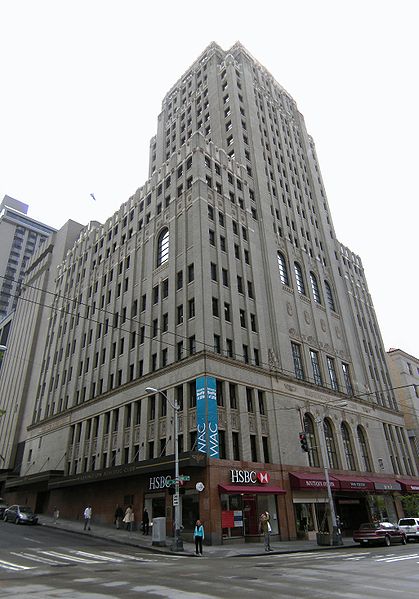
U.S. Swimmings Outstanding Newcomer went on to win five national championships in the 100-yard and 100-meter freestyle from 1934-36. She also held the American record in both the 400-yard and 400-meter freestyle events.
McKean capped a distinguished career by winning a bronze medal in the 400-meter freestyle relay at the 1936 Olympic Games in Berlin. For her entire career, McKean represented the Washington Athletic Club and trained under Daughters, who had now developed two national champions.
In 1935, Daughters told The Times he had one major ambition remaining: to assemble a womens 400-yard relay team and coach it to a national championship and world record.
More than any other victory in my career as a coach, I want that, said Daughters, with a specific eye to the U.S. Championships in Chicago. If we can win it and hang up a world record, I will realize my coaching ambition. I cannot explain what our four girls, Mary Lou Petty, Betty Lea, Doris Buckely and Olive McKean have denied themselves to point to this race. No one but myself can ever understand the combined effort that has been put in to make this team a winner.
A victory can be won in a very few minutes, but hours, days, weeks and months of training stand behind the fateful few minutes of a relay race. The girls have worked those hours freely. I have worked with them.
Petty, Lea, Buckely and McKean, collectively known as Daughters Daughters, went to Chicago, won the national championship and hung up a world record. They repeated the feat in 1936.
The world record posted by Daughters Daughters occurred the same week the University of Washington captured the Pacific Coast Rowing Championships on the Oakland Estuary, prompting a civic celebration. The April 18, 1935 Seattle Times carried this item:
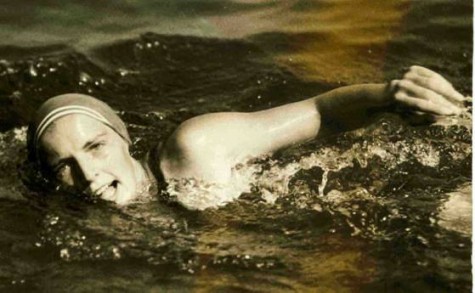
Seattle will go aquatic on a big scale tomorrow with one of the grandest receptions in the citys history planned in honor of the Queen Citys three Pacific Coast Championship crews and the record-setting swimmers. Ceremonies for the big occasion, which has been set aside in a proclamation by Mayor Smith as Welcome Home Day for the conquerors, will start at noon with a magnificent parade getting under way at Union Depot. Up Second Avenue, amid a blaze of color, confetti and cheering the great procession will move, with the University of Washingtons 70-piece band leading the way.
One float will ride the Washington Athletic Clubs world record relay team, and with them will ride Ray Daughters, molder of every world-champion swimmer to come out of Seattle.
At a WAC luncheon following the parade, Daughters received a new Chevrolet sedan, the club citing his work with Madison, Keane and the relay team, his third national champion.
That gift was given to a man who developed world champions and a host of other pupils who have combined to bring Seattle untold publicity of a decidedly favorable type, wrote The Times.
After Daughters Daughters won a second national championship in world-record time, Seattle newspapers urged readers to bombard the U.S. Olympic Committee with letters, telegrams and postcards in support of Daughters becoming head coach of the 1936 U.S. Olympic swimming team. After 32 of the leading swimming instructors in the country endorsed his candidacy, Daughters got the job.
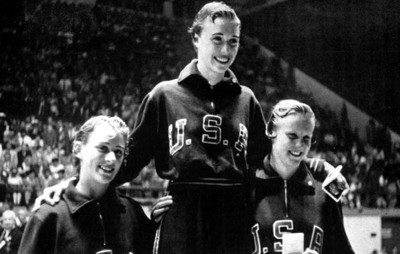
It didnt hurt that he had Keane among his stable of swimmers, or that he tutored Spokane-born Petty, a Lewis and Clark High graduate who made the Olympic team as a 100 freestyle swimmer (finished fourth after coming down with food poisoning the night before her race). And it certainly helped that Daughters had also developed the Michael Phelps of his day, Jack Medica, a University of Washington student.
During three varsity seasons (1934-36) Medica won a record nine NCAA titles and literally became a one-man team. After Medica won a gold and two silvers in Berlin (see Wayback Machines UW Bonanza At the 1936 Olympics and 10 Intriguing Olympians, Daughters held a variety of national-team positions in addition to supervising swimming at the WAC.
He served as the U.S. womens coach at the London Olympics in 1948; in 1952, 1956 and 1964, he was a team adviser, and in 1960 served as team manager and official photographer. During the years 1957-59, Daughters presided as chairman of the AAU Mens Swimming Committee.
In collaboration with Madison, who became a swim instructor at the Moore Pool, Daughters developed his final Olympic swimmer more than two decades after he coached Queen Helene.
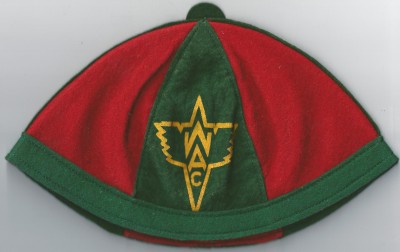
Daughters found Nancy Ramey on Mercer Island, also home to pairs skaters Peter and Karol Kennedy, silver medal winners in the 1952 Winter Olympics in Oslo. Ramey first started to swim in the Mercer Island Parks and Recreation youth program and set her first world record at age 15 in the 100 butterfly, clocking 1:09. To improve her endurance, Ramey swam the span of the 1-90 bridge and back, freestyle one direction, butterfly the other, frequently.
At the time she won her silver medal, at Melbourne in 1956, Ramey was a 16-year-old student at Mercer Island High (which also produced 1984 swimming gold medalist Mary Wayte). She especially wanted a chance to compete against the great Dutch butterfly swimmers, but lost it when the Netherlands boycotted the Games in protest of Russia’s invasion of Hungary. As it turned out, Ramey couldnt defeat her own teammate, Shelly Mann, who earned the gold by a margin of 0.9 seconds.
Although Ramey did not win gold, she became something of a celebrity after the Games for a generous act, details of which ran in publications such as The Seattle Times and Sports Illustrated.
Upon meeting members of the Hungarian womens swimming team, Ramey learned that they had been outside the country when the revolution occurred and were not permitted to return home. Ramey invited Suzie Ordogh, also 16 years old, to come live with her on Mercer Island, which the Hungarian did for three months.
As a result of Rameys invitation, American families and organizations across the United States hosted the remaining 32 members of the Hungarian team until the political situation stabilized in the country.
The Washington Athletic Club wanted to stage a parade for Ramey, as it had done for Madison 20 years earlier. But Ramey’s parents wouldnt allow it, reasoning, in Rameys words, It might go to my head.
One year after the Olympics, Ramey set a world record in the 100-yard butterfly in 1:03.8, topping the previous mark of 1:04.1 by Mann, who had beaten her in Melbourne.
As a more mature 18-year-old in 1958, her freshman year at UW, Ramey set world records in the 100-meter butterfly (twice) and in the 200 butterfly (once) and captured six national titles (five U.S., one Canadian). At the 1959 Pan American Games, Ramey won a silver medal in the 100-meter butterfly.
Ramey became one of Daughters more intriguing protoges. She graduated from UW in 1962 after spending her junior year at the University of Londons Bedford College. In 1967, she obtained a masters from the University of Wisconsin and later earned a doctorate.
She spent a number of years as a professor of religious studies at Stanford and, after she became Mrs. Jim Lethcoe, organized and directed Alaskan wilderness safaris after establishing, with her husband, an adventure-tourism company. They also opened their own publishing company (Prince William Sound Books), through which they authored four books.
An environmental activist, Ramey/Lethcoe represented the National Oceanic and Atmospheric Administration (NOAA), playing a key role in the 1989 Exxon Valdez oil-spill cleanup. She also helped establish the Alaskan Wilderness Recreation and Tourism Administration.
Now retired, the former Nancy Ramey lives in Valdez on her sailboat in Prince William Sound.
In January of 1936, months before he, Medica, Keane and Petty headed to the Olympic Games, The Saturday Evening Post asked Daughters to write an article on his teaching methods and techniques, and answer the following questions it had in the context of the article.
- What do you teach that is different from other coaches?
- What are your training methods?
- How do you get that last mite of speed out of your pupils that makes the difference between just good swimmers and real champions?
The article, published in The Saturday Evening Post May 30, 1936, revealed a coach who paid staggering attention to detail and plotted the careers of his best swimmers for years in advance of their athletic peaks.
First, Daughters identified potential, as he had done with Madison at the Green Lake Swim Carnival in 1927. To locate potential plums, he attended youth swimming meets all over the Pacific Northwest. Also, two or three times a year, Daughters conducted a Water Carnival at the WAC in which he opened the pool to the areas youth for a series of races he devised.
Daughters emphasized that he wasnt looking for speed yet, just native talent. Once spotted, Daughters invited his new recruit to join the WACs swimming program.
Daughters scheduled swim meets at regular intervals with the express purpose of having his swimmers try to break records, first local, then national. On Nov. 7, 1931, for example, he conducted a meet specifically to provide Madison a chance to set American records at 600, 700, 800 and 880 yards, and a young Medica an opportunity to establish a Northwest 220-yard record.
Daughters worked closely with each of his swimmers, setting their practice hours and competitions. During long training sessions, Daughters worked to refine his swimmers’ strokes. He altered their dietary habits and made all of his swimmers sleep 10 hours a night, making sure they went to bed exhausted.
The two requisites for a champion swimmer are first, condition and, second, rhythm, Daughters said in The Saturday Evening Post. Rhythm is what a speed swimmer must have and with that the ability to time his stroke to fit a pace. Of course, a swimmer, to be a star, must have native ability, but the entire process of development is enhancing rhythm, timing and conditioning.
Daughters largely vacated his post as head swimming coach in 1950 to focus on his duties as the WACs athletic director, although he continued to work with special swimmers, such as Ramey, who showed Olympic potential.
Daughters retired from the WAC in 1964, became managing director of the Mercer Island Country Club in April 1965, and retired for good, to Arrowhead Beach on Camano Island, a year later. He died Sept. 16, 1967 following a long illness.
In 1964, as he left the WAC, the club threw a big banquet in his honor, at which Daughters quipped, This club will do anything to make a dime. Later in his address, Daughters said, Ive been lucky to do what I always wanted to do teach swimming. I never had anything else in mind.
Daughters added that he was proudest of the fact that every top-flight female swimmer he ever coached beat his own best time of 59 seconds in the 100-yard freestyle.
The girls swam faster, as Myers pointed out, because Ray Daughters showed them how.
———————————————
Many of the historic images published on Sportspress Northwest are provided by resident Northwest sports history aficionado David Eskenazi. Check out Davids Wayback Machine Archive. David can be reached at (206) 441-1900, or at seattlesportshistory@gmail.com
